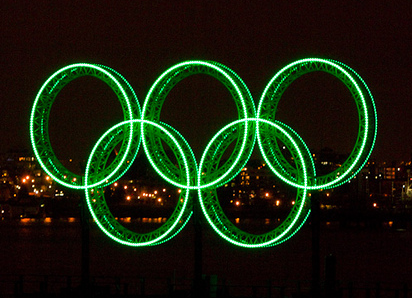4.1 Million Electric Vehicle Charging Stations by 2017
By Joseph Tohill
Although there are currently only about 8,000
public EV charging in the US (not including private stations), a recent study
by Frost &
Sullivan suggests the number of EV charging stations could skyrocket to 4.1 million by 2017. This
is big news for supporters of the EV economy, as it suggests that EVs are
increasingly becoming a prominent form of personal transportation.
Frost & Sullivan project that the most
common ones will be Level 1 chargers, as Level 1 charging cords are included
with the purchase of a new EV. These cords can be plugged in at home, where
people can charge their cars for 8 to 10 hours at night.
The study also recognized sizeable growth
in the number of Level 2 chargers, which could account for 27% of the market in
2017. Level 2 charging stations can charge an EV in 2 - 4 hours thus making
them an ideal choice while one is at work or at the mall. Consequently, a
number of retailers and office buildings are currently installing Level 2
charging stations.
Altogether, EV charging stations could
expand by a compound annual growth rate of 128.12% until 2017.
What could account for the substantial
growth in EV charging stations over the next five years?
Part of the reason for such big growth in
the EV market is because of favourable government subsidies and volatile fuel
prices. Federal, state, and municipal levels of government provide substantial
subsidies for both the purchase of EVs and the installation of EV charging
stations. This in turn affects the market, and encourages individuals (and
organizations) to invest in the EV market when they might not have previously.
Another reason is because people are
beginning to realize the benefits of utilizing EVs as a form of personal
transportation. With fuel prices continuing to trend upwards and increased
concern over the environment, many consumers are realizing that EVs are the
smarter transportation choice. The only lingering concerns that often remain
are difficulties in finding a place to charge their car.
Often called “range anxiety” many
prospective EV buyers are concerned that their vehicle will run out of juice
before arriving at its destination. Although there has been considerable
expansion in the number of EV charging stations over the past few years, there
are still not enough to quell the anxiety of potential EV drivers.
But as EVs become more popular, the number
of EV charging stations will continue to increase – simple economics of supply
and demand. And as EV charging stations become more common, so too will the
number of EV drivers (since there will be less concern over where to charge
their cars).
And this is what I like to call the
“cascade effect” in the EV economy. EV charging stations are continuing to be
built because there is currently a demand for them. As these charging stations
come online and proliferate across the country, more people will be encouraged
to purchase an EV – thus reinforcing the need for more charging stations.
In the end, it is apparent that EV charging
stations will only increase over time. Whether or not they will number 4.1
million as Frost & Sullivan suggests is yet to be determined. But given the
current volatility of oil prices and state of the green economy, I would be
willing to bet they are not too far off the mark.
Joseph Tohill is a freelance writer and online communications specialist for organizations in the sustainability sector. He has a B.A. in Interdisciplinary Studies from the University of British Columbia and spent most of his academic career studying sustainable urban development; namely the interdisciplinary relationship between built form and natural environment.





